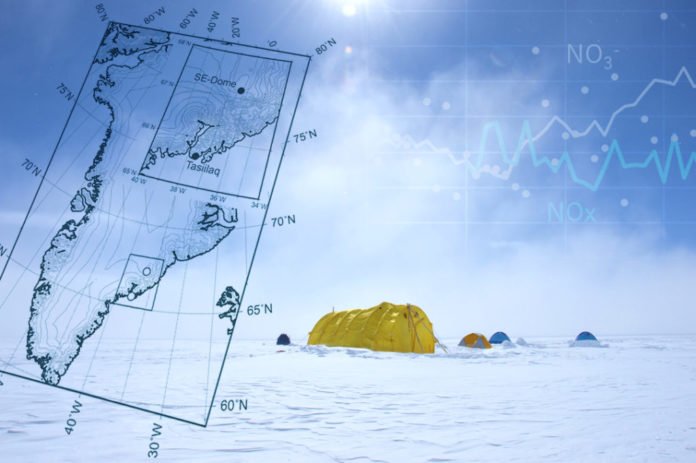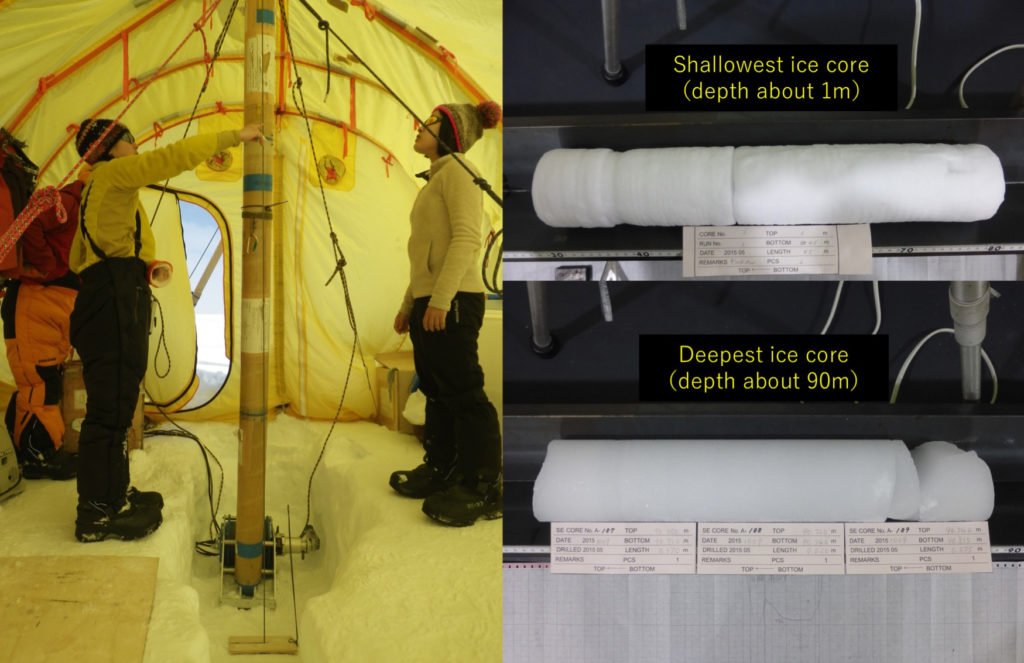Aerosols that are as small as 2.5 micrometers particulate matter are known as toxic for human health. The formation of aerosols from sulfide oxide (SOx) and NO in higher amount can lead to serious air pollution.
In 1990, concerns over this issue, US, and other countries’ government launched some protocols that lead to a reduction in SOx and NOx emissions. Emissions from emerging economies such as China and India have remained high so far.
In order to study atmospheric aerosol depositions in ice cores from 1957 to 2014, scientists at Hokkaido University drilled a 90-meter ice core from the Southeastern Greenland Dome, an ice sheet dome in Greenland that has been used for research. They kept the sample frozen it was transported to a cold room at the university’s Institute of Low-Temperature Science in 2015.
Scientists thought about sulfate and nitrate motions in the ice center over the four decades with SOx and NOx outflows noticeable all around.
To examine the wellsprings of the chemicals saved in the ice center, transport pathways of air masses were broke down utilizing a technique called Backward Trajectory Analysis.
The outcomes showed that the most astounding level of air masses originated from North America, while lower yet at the same time high rates originated from Europe and Russia. The scientists increased every area’s NOx and SOx outflows by its air-mass commitments to ascertain the volumes of NOx and SOx that achieved the Southeastern Greenland Dome.
The outcomes demonstrated that the sulfate transition mirrored the historical backdrop of diminishing SOx outflows from neighboring nations, for the most part, the United States, where the scientists trust the discharges originate from. Interestingly, the decadal pattern of nitrate motion contrasted with the pattern of NOx discharges, which have been declining since the 1970s or 1980s.

Nitrate transition in the ice center topped in the 1990s, and levels in the 21st Century have stayed higher than that those from the period from the 1960s to the 1980s, in spite of endeavors by the United States and European nations decrease discharges.
However, the reason for this discrepancy remains unsolved but scientists are further planning to examine the complicated chemical changes involving NOx.
The study is published online in the Journal of Geophysical Research: Atmospheres, January 4, 2018.

